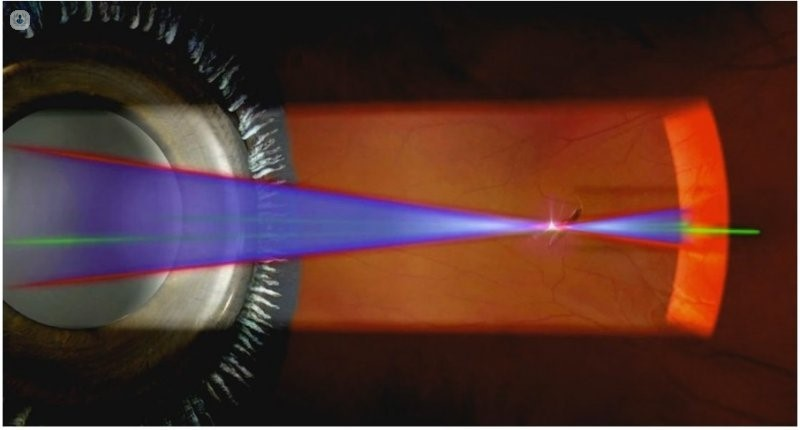
How to treat eye floaters
Eye floaters (medically known as myodesopsia) are those annoying floating bodies that appear in your vision. Floaters are more visible when looking at a clear and well-lit background. They are usually mobile and can be located in the visual axis, causing visual incapacity to perform tasks in which visual precision is required, as is the case of near vision.

Causes of Myodesopsia
Eye floaters are produced by a shadow that projects the vitreous gel onto the retina of the patient. With age, this gel undergoes degeneration in the form of condensations (SINERESIS) and lagoons (SINCHISIS). A detachment of the posterior vitreous can also create floaters.

Treatment of myodesopsia
Classically, ophthalmologists have explained to patients that they have two alternatives for treating eye floaters:
• Vitreous-retinal risk surgery, called vitrectomy
• Learn to live with them and wait for them to move from the visual axis.
More recently, there are two more options:
• Enzymatic vitreolysis
• Vitreolysis laser treatment which is a non-invasive solution to this annoying visual problem. There is published evidence that indicates that 90% of patients with this symptomatology can be treated and that 80% of cases achieve a total or partial improvement.
It is a very precise treatment but it is not without complications; there can be side effects, such as a cataract, an increase in intraocular pressure, macular oedema.
Analysing a published series of 1,500 consecutive cases shows that the incidence of these complications is absolutely exceptional. No case of retinal detachment has been documented in these publications. We believe, therefore, that it is a very safe procedure based on the scientific literature analysed.
If you suffer from myopia, it should be explored in detail by an ophthalmology specialist. They will assess the status of your macula, your peripheral retina, the status and classification of your posterior vitreous detachment, as well as the type and location of myodesopsis. We can safely treat all those opacities that are within 3 mm of the retina and 4 mm of the lens.
Laser vitreolysis for the treatment of myodesopsia
The technique of laser vitreolysis consists of the application of an Ellex Ultra Q LASER, focused precisely on the area of glassy opacity in order to treat eye floaters. The focal temperature rises to 4000º Celsius and vaporises the vitreous tissue, forming bubbles of gas. In less than 12 hours, the patient experiences a great improvement in symptoms and has clearer vision. It is a painless procedure lasting 30 minutes which does not have to be performed in an operating theatre.
It is possible that in some cases it is necessary to repeat the procedure to eliminate or reduce the patient's symptoms.

